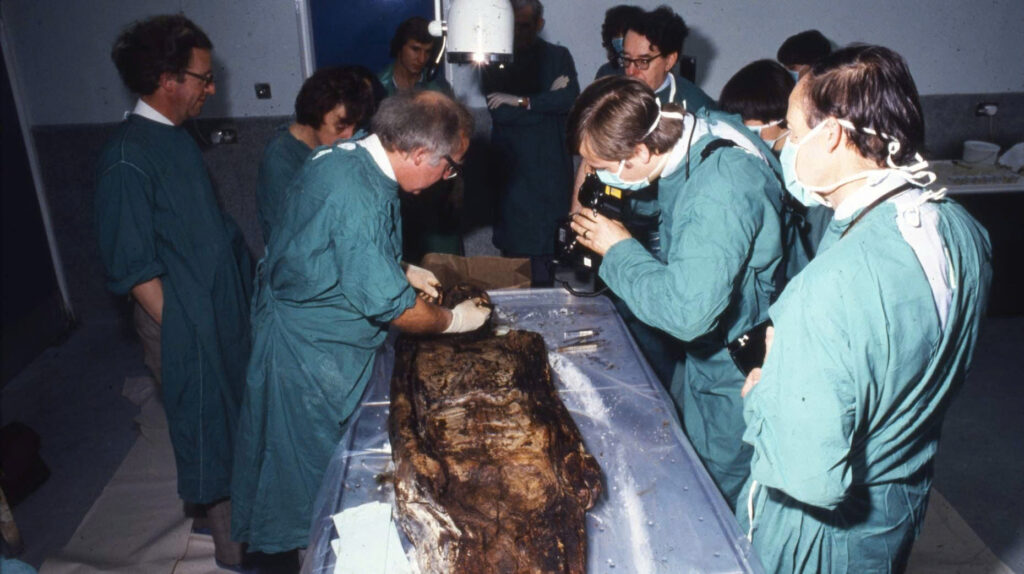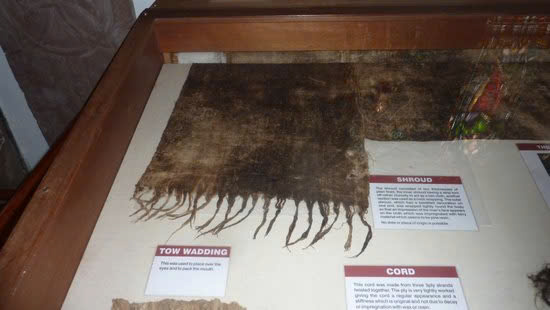In the quiet coastal village of St Bees, Cumbria, one of archaeology’s most astonishing discoveries lay hidden beneath a simple car park for over six centuries. When excavations began at the 12th-century St Bees Priory Church in 1981, archaeologists could never have anticipated the remarkable window into medieval life—and death—they were about to uncover.
The Extraordinary Discovery
What started as a routine archaeological dig quickly became extraordinary when workers unearthed a wooden coffin wrapped in lead. Inside lay the incredibly preserved remains of a man who had died around 1368—over 600 years earlier. The preservation was so remarkable that his features remained intact, his eyes still visible, creating the unsettling impression of someone who had died only recently rather than in the distant medieval past.
This exceptional find would come to be known simply as “St Bees Man.”

A Noble Identity Revealed
Through meticulous research, archaeologists identified the remains as those of Anthony de Lucy, the 3rd Baron Lucy—a nobleman with connections to England’s aristocratic military class. Unlike his more famous grandfather (the 1st Baron Lucy who served as warden of Carlisle Castle and fought at the Battle of Bannockburn in 1314), the younger Anthony’s life had been somewhat obscured by history until this discovery brought him back into focus.
Unprecedented Preservation
The Medical Examination
The autopsy findings left scientists astounded. Nearly all of St Bees Man’s internal organs remained intact and in excellent condition—with only the brain having significantly deteriorated. Even more remarkable was the presence of liquid blood still in the chest cavity and remnants of his final meal—identified as a mixture of porridge and raisins—preserved in his stomach after six centuries.
Secrets of Medieval Embalming
The extraordinary preservation of St Bees Man resulted from sophisticated medieval burial techniques:
- The wooden coffin’s lead wrapping created a moisture-resistant barrier, establishing a dry environment around the body
- Pine resin coating on the burial shrouds prevented air from reaching the remains, inhibiting bacterial growth
- A natural chemical process occurred, as explained by Dr. John Todd: “Under such conditions, hydrolysis of the neutral fats of the body tissues took place, changing them to fatty acids which were deposited as crystals in the tissues”

This chemical transformation effectively dehydrated the tissues while simultaneously producing glycerol—a natural preservative that helped maintain the body’s remarkable condition across the centuries.
A Violent End
The nobleman’s death was far from peaceful. Forensic analysis revealed a hemothorax as the cause of death—a broken rib had punctured his lung, likely during battle. His jaw also showed fractures in two places, further evidence of a violent confrontation before his death.
Adding another layer to this archaeological narrative, researchers discovered another skeleton nearby, believed to be Anthony’s sister, Maud de Lucy. This family connection provides intriguing insights into medieval burial customs and the importance of kinship bonds even in death.
Video
Legacy and Reinterment
After thorough examination and documentation, St Bees Man was respectfully reinterred at the site of his discovery. His remains, however, continue to provide invaluable information about medieval life, death, burial practices, and preservation techniques of 14th-century English nobility.

The case of St Bees Man stands as one of archaeology’s most significant and well-preserved medieval discoveries—a literal embodiment of history that allows us to look directly into England’s medieval past and connect with an individual who lived, breathed, and died over six centuries ago.
This remarkable preservation transcends time, offering modern scientists unprecedented opportunities to study medieval human remains and providing a deeply personal connection to our collective history.

